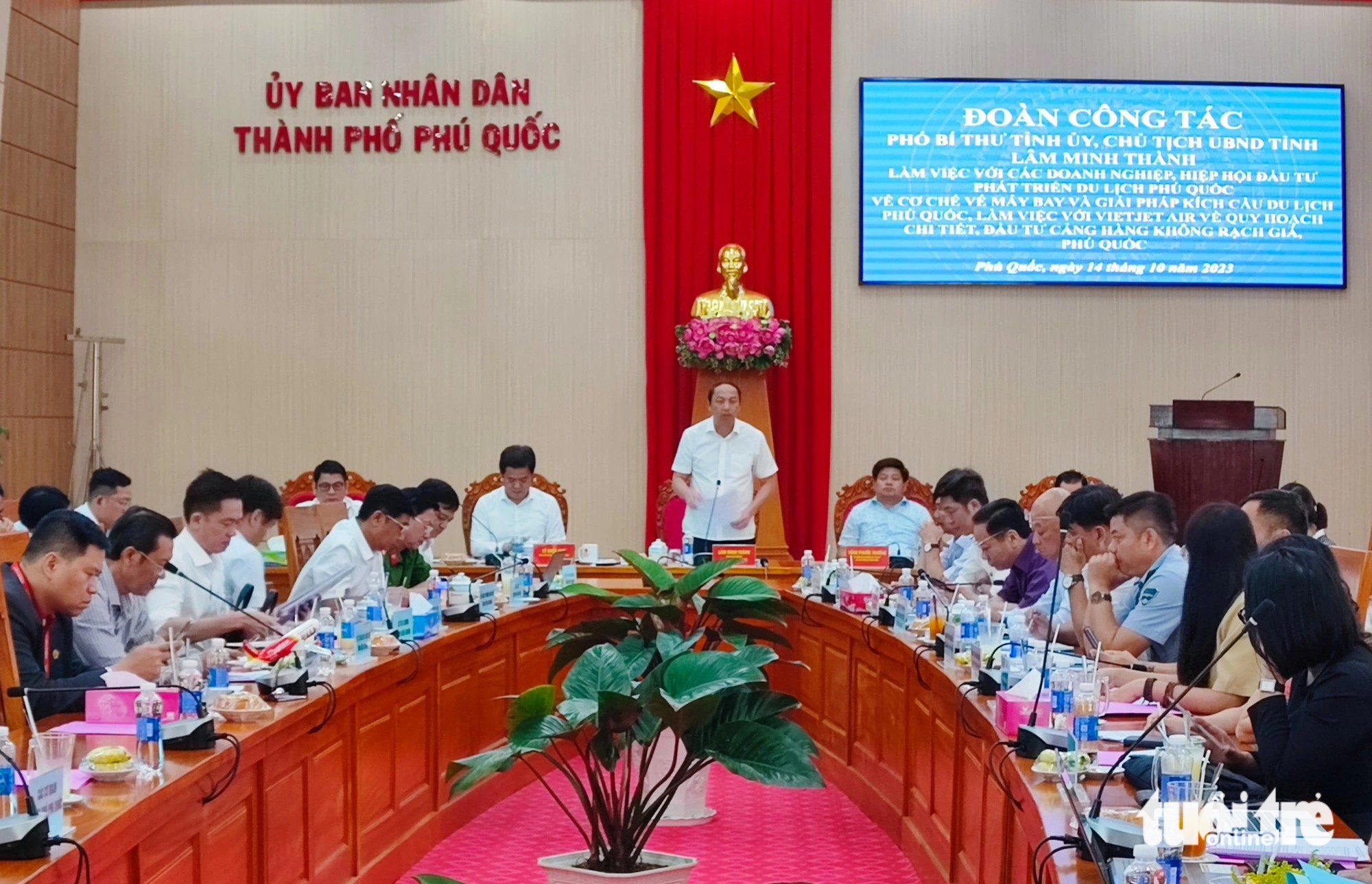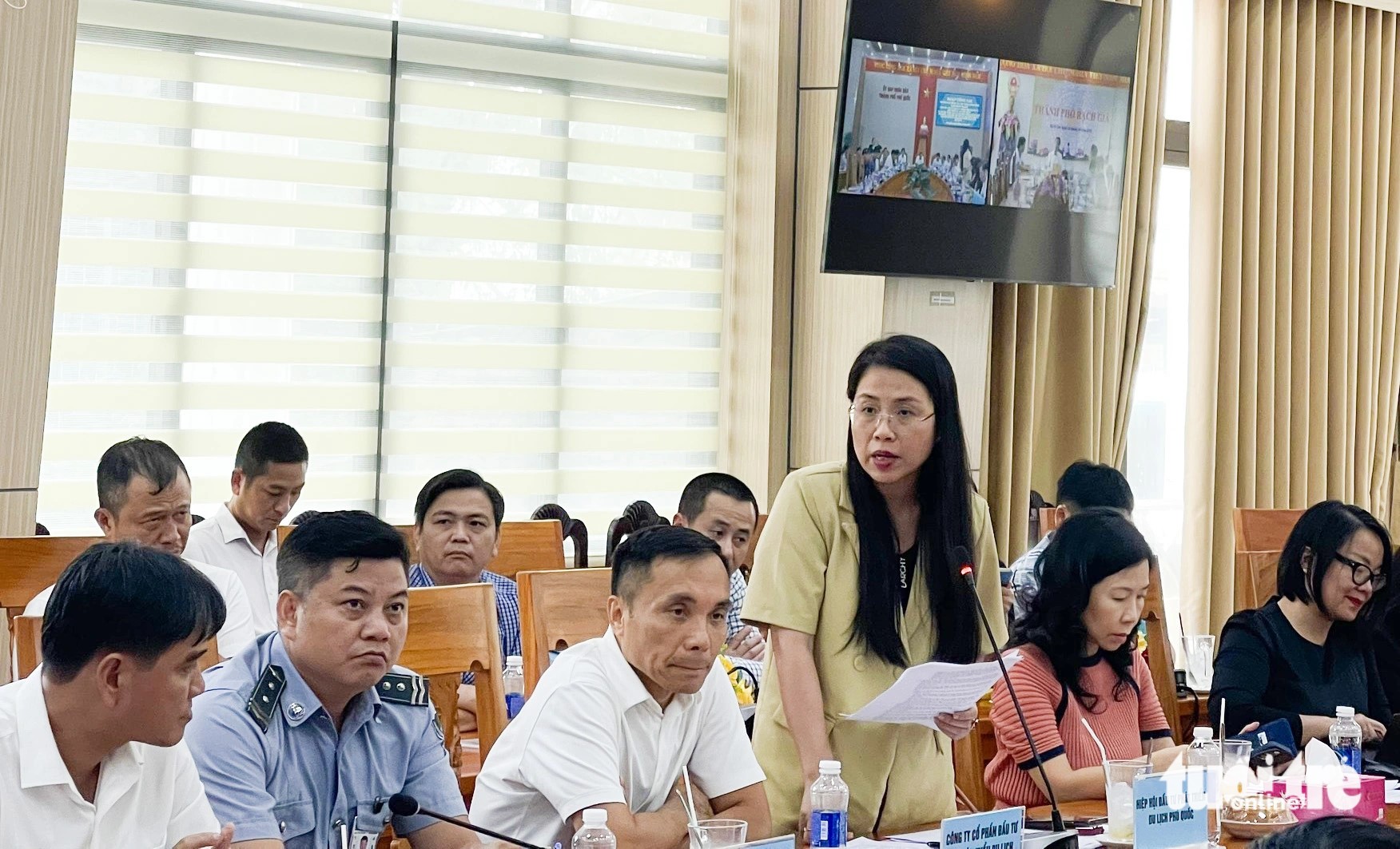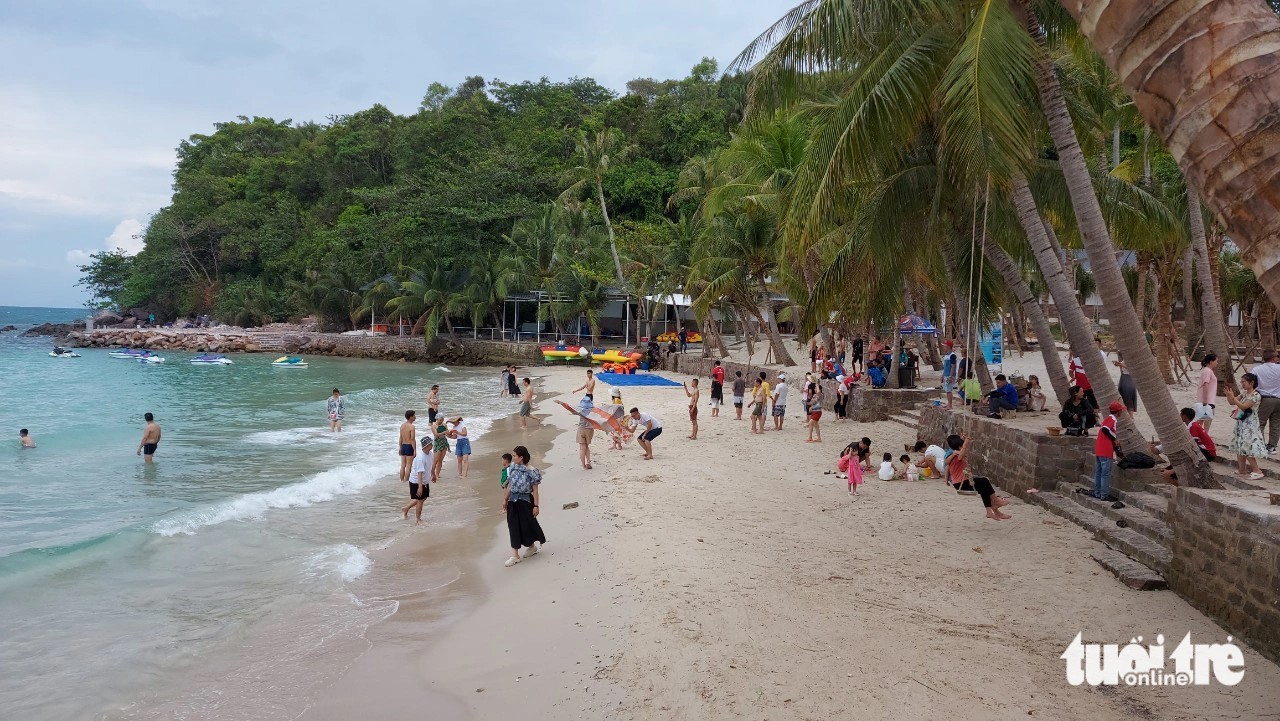Authorities in Kien Giang Province and relevant parties have discussed ways to revive the tourism sector of the Vietnamese province’s Phu Quoc as the number of visitors to the island city has sharply declined in recent times, partly blamed on increased airfares.
The discussion took place at a meeting in Phu Quoc, known as the ‘pearl island,’ on Saturday between local authorities and representatives from the Phu Quoc Tourism Development Investment Association, some airlines, and tourism firms.
At the event, chaired by chairman of the Kien Giang administration Lam Minh Thanh, many delegates warned that some tourism companies have suffered great losses due to shrinking visitor counts, especially domestic tourists, from the beginning of 2023.
They asked authorities to take effective measures to prevent the downward trend, which they said partly resulted from increased airfares to the island city.
More expensive travel has given rise to a huge barrier to the attraction of visitors as most travelers come to Phu Quoc by plane.
During the National Day holiday on September 1-4, Phu Quoc received a total of 62,544 visitors, down 26.5 percent year on year, including only 5,700 international visitors, Le Thi Hai Chau, general secretary of the Phu Quoc Investment and Tourism Development Association, told the meeting.
|
|
| Le Thi Hai Chau, general secretary of the Phu Quoc Investment and Tourism Development Association, speaks at a meeting held in Phu Quoc City on October 14, 2023 to discuss ways to revive Phu Quoc’s tourism. Photo: Hoang Dung / Tuoi Tre |
Among the total, the in-house guests reached 19,209, a decrease of 38.6 percent from a year earlier, Chau said, adding that the room occupancy during the period was merely 27 percent on average, a drop of some 40 percent points.
Chau recommended that airlines stabilize airfares and travel firms adopt appropriate service and room pricing policies to attract visitors back to Phu Quoc.
A representative of Vietnam’s budget carrier Vietjet said that in 2022, Phu Quoc tourism boomed with about 40 flights per day, with a peak of 150 flights, but this year the figure dropped to 26 flights per day, badly affecting the airline’s revenue.
Nguyen Bac Toan, director of the commercial department at Vietjet, said the firm is ready to join local tourism businesses in reviving Phu Quoc tourism, but suggested that travel firms should launch attractive tourism packages at affordable prices to lure visitors and that local authorities should organize events or conduct programs to further introduce the island to international travelers.
Nguyen Vu Khac Huy, standing deputy chairman of the Kien Giang Tourism Association and general director of Vina Phu Quoc Travel Company Limited, attributed the decline in the number of tourists to many emerging problems, including high airfares, economic difficulties, and people’s preference to travel close to home.
The association recommended that the Kien Giang administration work with the Ministry of Transport, Vietnam National Authority of Tourism, and Civil Aviation Authority of Vietnam, and airlines operating flights to Phu Quoc to agree on a reasonable airfare mechanism that can both help stimulate air travel demand and ensure the interests of airlines.
Phu Quoc City has nearly 30,000 accommodation rooms and 800 tourism establishments with diverse customer segments, according to Huynh Quang Hung, chairman of the Phu Quoc administration.
About 60 percent of visitors come to Phu Quoc by plane and the rest by boat, but currently, both airways and waterways have received very few travelers to the island, Hung said.
To attract more tourists to Phu Quoc by air, airlines should apply appropriate air ticket prices while agencies concerned should address other problems related to food safety, environment, security, and order,” Hung said.
Fewer visitors coming to the island not only affects the revenue of local businesses but also the reputation of Phu Quoc tourism, Kien Giang chairman Thanh said.
He therefore called on related agencies to help remove obstacles facing local travel businesses and assist them in beefing up tourism promotion activities, expanding markets, and diversifying tourism products to revive tourism growth.
The Kien Giang Investment, Trade, and Tourism Promotion Center and the provincial Department of Tourism should act as a bridge for airlines and travel agencies to reach cooperation agreements on bringing more travelers to Phu Quoc in the coming time, Thanh stated.
|
|
| This image shows travelers at a beach on Phu Quoc, the island city of Kien Giang Province in southern Vietnam. Photo: Chi Cong / Tuoi Tre |
Located in the Gulf of Thailand and to the southwest of Vietnam’s mainland, Phu Quoc is the largest island of the country with an area of 573 square kilometers and administered by Kien Giang Province.
The ‘pearl island’ is endowed with clear blue water beaches such as Bai Sao and Bai Dai, and plenty of local specialties including seafood, pepper, and pearls, among others.
It also has well-known destinations including the busy Duong Dong town, Ham Ninh and Ganh Dau fishing villages, and other attractive tourist points.
Previously a district of Kien Giang, Phu Quoc was turned into the country’s first island city on March 1, 2021, pursuant to a resolution issued by the Vietnamese National Assembly’s Standing Committee in late 2020.
Like us on Facebook or follow us on Twitter to get the latest news about Vietnam!






















































